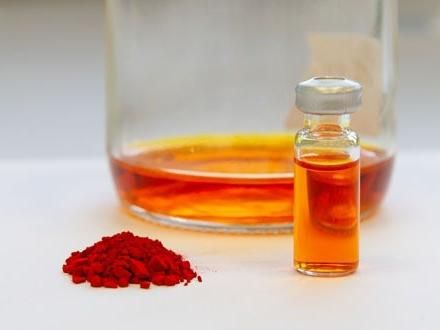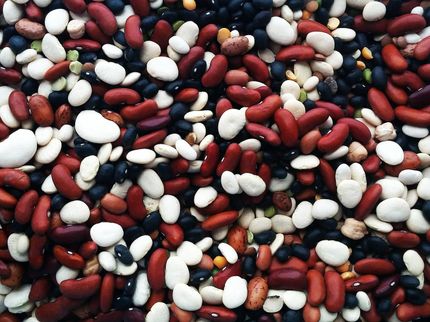Microalgae: Possible perspectives for agriculture
New sources of intake with high-quality fatty acids and colorants from microalgae
Advertisement
Will German agriculture rely on microalgae in the future? In any case, the unicellular aquatic plants can be used to produce numerous valuable substances - so they have great potential as a renewable raw material and biomass source for the bioeconomy. In the joint project "FuTuReS", researchers from the Fraunhofer Institute for Interfacial Engineering and Biotechnology IGB, the University of Hohenheim in Stuttgart and the Karlsruhe Institute of Technology (KIT) investigated under which conditions and for which purposes algae cultivation is worthwhile. After two project years, the research team draws a positive balance: The key lies in the right selection of valuable substances and the use of artificial light.
Microalgae are frugal and productive at the same time: they only need light, carbon dioxide (CO2) and a few nutrients - and they start producing valuable substances. Depending on the specific type of algae, the single-celled organisms can produce dyes, omega-3 fatty acids or proteins that are suitable for use in the food or cosmetics industry, for example. In addition, they are also an ideal source of biomass that can be used as high-quality animal feed. Cultivation of algae could thus potentially open up promising business areas for farmers.
Transdisciplinary approach: piloting, balancing, stakeholder participation
To tap this potential for agriculture, the FuTuReS collaborative project, funded by the German Federal Ministry of Food and Agriculture (BMEL), addressed the question of how algae cultivation must be designed in concrete terms so that it is both economically viable and ecologically sound.
In parallel, the project investigated the interests and expectations of practitioners and technology developers in agriculture and the food sector. As a result of this participatory process, FuTuReS developed concrete scenarios and recommendations for action on how microalgae can be integrated into agricultural production cycles in the future.
Process data from microalgae production and valuable material extraction
For the project, the Fraunhofer Institute for Interfacial Engineering and Biotechnology IGB played out various cultivation scenarios on a pilot scale for the first time: Algae cultivation in photobioreactors on the one hand in sunlight in outdoor facilities or greenhouses and on the other hand with artificial lighting in closed indoor facilities.
The researchers used the unicellular diatom Phaeodactylum tricornutum , which can also be cultivated well under the conditions of the Central European climate. The focus of the investigations was on the production of the dye fucoxanthin, eicosapentaenoic acid (an omega-3 fatty acid, EPA for short) and proteins, as well as the value added generated in the process.
"To increase the economic efficiency of algae cultivation, in FuTuReS we also extracted the various valuable substances one after the other from the same biomass according to the principle of a biorefinery," explains Dr. Ulrike Schmid-Staiger, project coordinator at Fraunhofer IGB and head of the institute's algae biotechnology research group. Dyestuffs, fatty acids, proteins and carbohydrates can thus be extracted as individual fractions.
Higher biomass yield thanks to continuous artificial lighting
The generated process data were then evaluated at the University of Hohenheim. The balances revealed that continuous illumination with artificial light from energy-saving LED lamps has advantages over the (naturally non-continuous) use of sunlight or daylight in open-air operation. The uninterrupted supply of light during the day and night has increased the microalgae biomass produced from 14 to 123 tons per hectare, while significantly reducing the cost of producing a kilogram of biomass - by a full 70 percent.
Although electricity requirements are slightly more than half higher (54 percent), significantly less water and land are needed (80 and 86 percent, respectively). "The increased biomass yield compensates for the higher costs of artificial lighting," is the positive conclusion drawn by Sebastian Weickert, a research associate at the Department of Renewable Resources in the Bioeconomy at the University of Hohenheim.
With regard to the yield of the valuable substances produced in the process, however, the picture is different: "Our investigations were successful with regard to fucoxanthin and EPA - with these high-priced products, we see that the production effort pays off economically," says Dr. Schmid-Staiger. Extracting proteins beyond that, however, no longer increases profitability, as proteins are currently available globally at fairly low prices.
"For the production of biomass with artificial light, you don't need agricultural land or you can use disused agricultural infrastructure, e.g. empty barns. This and the high yields of valuable substances make algae cultivation a potentially lucrative business - it depends on which products you want to produce and for which industry they are intended," Weickert sums up.
Agricultural businesses open to algae cultivation
In addition to the scientific results, the project also produced another important finding: agricultural businesses are basically open to algae cultivation, but point to a need for further research and support.
"Under favorable conditions, microalgae cultivation could become a new business field for some players in agriculture to produce high-quality regional products - the potential is definitely there. Our research has clearly shown that," sums up Dr. Christine Rösch, head of the "Sustainable Bioeconomy" research group at the Institute for Technology Assessment and Systems Analysis (ITAS) at the Karlsruhe Institute of Technology (KIT).
She recommends consistent further development of microalgae technology, especially with regard to control and automation, as well as the promotion of investments and cooperative partnerships. "In the FuTuReS project, we attached great importance to engaging in dialogue with stakeholders right from the start and involving them in the research," explains the scientist.
In this way, their experiences, knowledge, expectations and fears could be taken into account directly. The project team was thus able to develop criteria and scenarios that were not based solely on the knowledge and visions of the researchers involved, but were closer to the ideas of potential users and adopters of algae technology.
FuTuReS: Funding
The partners of the joint project "FuTuReS - Economic and Ecological Evaluation of a Biorefinery Approach for the Production of Fucoxanthin and EPA on a Pilot Scale and Transdisciplinary Developed Scenarios on an Industrial Scale in Germany" (FKZ: 22017218, 2219NR180 and 2219NR178) would like to thank the German Federal Ministry of Food and Agriculture (BMEL) and the Agency for Renewable Resources (Fachagentur für Nachwachsende Rohstoffe e. V.) for their funding.

For the production of the carotenoid fucoxanthin with the diatom Phaeodactylum tricornutum, algae cultivation with artificial LED lighting pays off.
Fraunhofer IGB
Note: This article has been translated using a computer system without human intervention. LUMITOS offers these automatic translations to present a wider range of current news. Since this article has been translated with automatic translation, it is possible that it contains errors in vocabulary, syntax or grammar. The original article in German can be found here.


























































